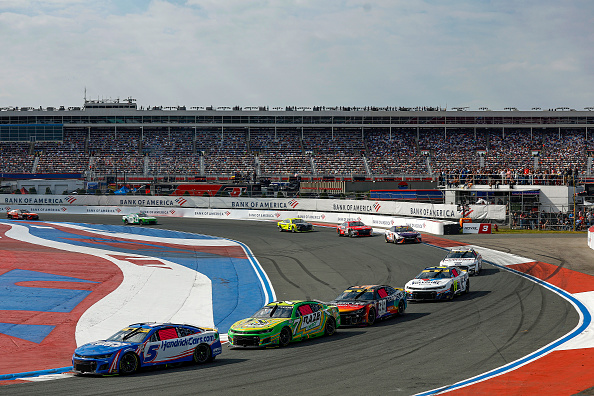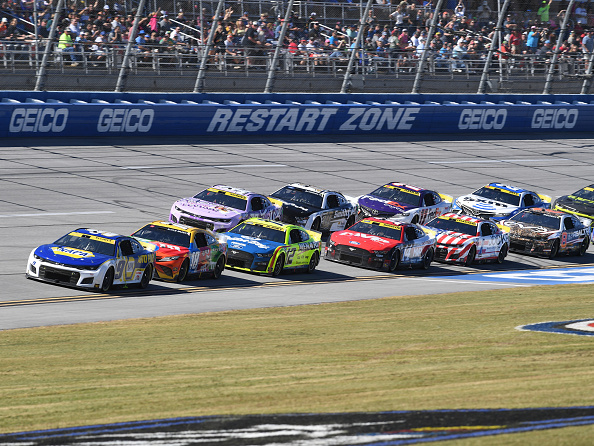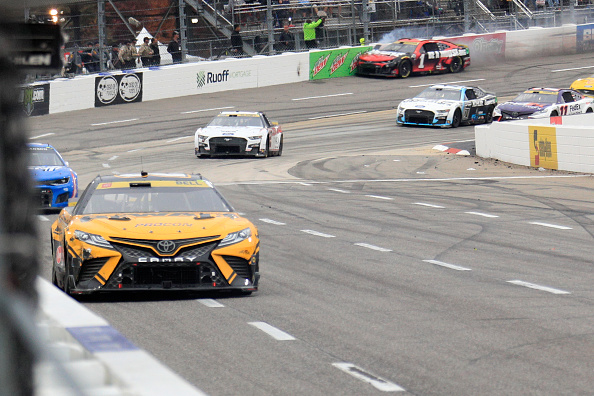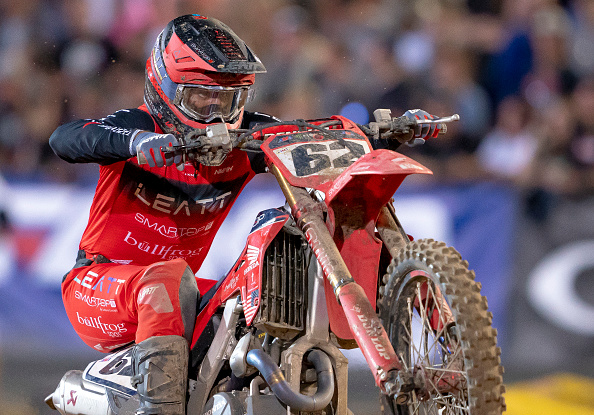The best way I could describe the overall state of NASCAR right now is the ‘This is Fine’ meme. You know the one where the cartoon dog is in a burning building oblivious to what is around him. With a new generation Cup Car that is not up to safety standards, team figureheads going public with frustrations over upcoming TV deal negotiations. As well as the general revenue split. Additionally, a recent points penalty against a playoff driver was overturned by a third-party appeals board with a suspect pannel. As well as talks of a fourth manufacturer joining/re-joining the sport falling through. So yeah I’d say things are going fantastic right now.
Be sure to check out all of our NASCAR coverage.
The Generation Seven NASCAR Cup Car is a Failure in the Safety Department
Let’s rewind the clock to the weekend of July 24th, when the first major red flag for this NextGen car popped up. Before then, you heard the occasional comment on how the car felt. Then last year there was a report that a crash test at Talledega went bad. The first notable injury suffered in this car was in a relatively innocent-looking crash by Kurt Busch in qualifying. The fact that it seemed like a routine hit was more concerning than anything. For comparison purposes, here is Busch’s wreck, with Michael McDowell’s infamous Texas accident right below. Note that the latter raced the next day, and Busch may end up missing the final 16 races of the season.
So what’s the biggest difference between the Gen5/COT car and the Gen7 you might be wondering. That is that the chassis are no longer made in-house by the teams (which isn’t a secret, just a refresher), but by a single source vendor. Additionally, teams are not permitted to make any changes to what they get which doesn’t help things. A common complaint that has come up in recent weeks has been the front and rear clips of the car being too stiff. Busch’s wreck demonstrated that to be true, but also Alex Bowman’s recent wreck at Texas as well, which knocked him out of postseason contention. That isn’t even considering Cody Ware’s viscous wreck in that same race either. Upcoming changes also don’t help any of those drivers.
Continued
Just this last weekend NASCAR had a meeting with the drivers over safety concerns. Two weeks after Bowman and Ware’s crashes, and nearly two months after Busch’s, which is inexcusable. That was even echoed by NASCAR president Steve Phelps on the NBC pre-race show before the Roval. And in fairness to him, a suspended Childress went out of his way to give a vote of confidence to Phelps after that interview. Additionally, he has been spoken highly of by plenty of people in the sport in the past. Based on that, this doesn’t sound like this falls on him. But clearly, this car was rushed out even after being delayed by a year. Two drivers are now out with concussion issues because of it as well, and that’s the bottom line.
Revenue Split Concerns
As of now, the current TV/Media rights deal NASCAR has is set to expire at the end of 2024. Just last week some key players on the team side of things have come out with some heavy grievances. That group includes Hendrick Motorsports exec Jeff Gordon (yes, that one), who admitted that HMS will not turn a profit this year. That’s the second in command of arguably the biggest team in the sport saying that. What does that tell you about the rest of the teams in NASCAR?
The Race Team Alliance, a pseudo union in all but name, sent NASCAR a proposal about a new revenue distribution agreement this summer. They only got a counter proposal this weekend, and according to 23XI investor Curtis Polk, had a “minimal increase in revenue” going to the teams. On top of NASCAR proposing a cost cap, despite the fact they just made chassis single source.
The understanding under the current agreement, according to Sports Business Journal, is that 65 percent of media revenue goes to the tracks, 25 percent to the teams, and 10 percent directly to NASCAR. Seeing as NASCAR outright owns nearly a dozen tracks where they run sanctioned events, that feels a bit lopsided. Polk also stated that according to the RTA’s calculations, the teams collectively represent under 10 percent of the value in the sport, which is downright insane. On top of being insane, that isn’t a sustainable practice, especially considering, according to SJB, that sponsorship covers anywhere from 60-80 percent of a team’s annual revenue, and just about every team won’t break even. How NASCAR thinks this is sustainable for the long term is beyond me, but good for the teams sounding the alarm over the weekend.
Dodging Away
The hope with the NextGen car, as well as the lower horsepower engines and talks of going electric, was to get at least one more manufacturer into the fold. Yesterday, it was revealed that Dodge, who left the sport in 2012 after winning a Cup title with Brad Keselowski, backed out of talks. More interesting, is that those talks were with Roush Fenway Keselowski Racing, according to Adam Stern. For now, the only major American motorsports series they find themselves in is NHRA. Although Stern also said that NASCAR was trying to get Dodge into both NASCAR and IMSA. Although this isn’t a catastrophic development, getting to four manufacturers would be a big win for NASCAR with that said. There’s also always the chance some other manufacturer wants to test the waters down the road as well.
Getting off the Hook
The big story after Texas was William Byron spinning out Denny Hamlin on the front stretch. Impressively doing so without a single person in race control seeing it. Not surprisingly, Byron was penalized post-race with a loss of 25 points and a 100 thousand dollar fine. Well, that was 25 points before the National Motorsports Appeal Panel (independent of NASCAR) decided to overturn the points deduction.
What I would say about that is this. If they don’t feel like the punishment fits the crime for Byron, that is fine. The consequence of that is now driver self-policing is going to turn into the wild west if that is the set precedent. If Hamlin decides to go after Byron, specifically under caution, the appeal board better treat Hamlin or anyone else the same now. Doesn’t help that the two people responsible for the points deduction going away were a short-track owner who owns a Chevrolet dealership. As well as an executive of Raycom Sports. Did I mention this inadvertently take Kyle Larson out of the NASCAR Playoffs as well?
Could an IRL/Cart Esque Split be in NASCAR’s Future?
This would be the worst-case scenario for all involved parties, but there is a path I can see leading to the teams and NASCAR breaking away from each other. It happened in IndyCar, and multiple major national series have existed simultaneously. Drag racing (NHRA-IHRA) and Short Course Racing (LOORS-TORC) are two notable examples, but the latter weren’t from series splits. NASCAR effectively splitting undoubtedly would be the biggest of any of those, and NASCAR has the most to lose here if you ask me.
Losing top talent and teams, and expecting new potential team owners to want to buy into what is currently a net negative business venture would be a mind-boggling expectation. Not to mention, what drivers would stay if any new potential series offers better money, safer and more affordable cars, plus a better product? The RTA has as much leverage as humanly possible if you ask me. The days of NASCAR being “here long before and after you” could be a thing of the past. Unless they want to come to the table and play ball with the teams.
Check us out on our socials:
Twitter: @PTSTNews and @TalkPrimeTime
Facebook Page: Prime Time Sports Talk
Join our Facebook Group: Prime Time Sports Talk
Instagram: @primetimesportstalk
Follow Jack Gaffney on Twitter @JackGaffneyTDT
Main Image Credit: Embed from Getty Images







